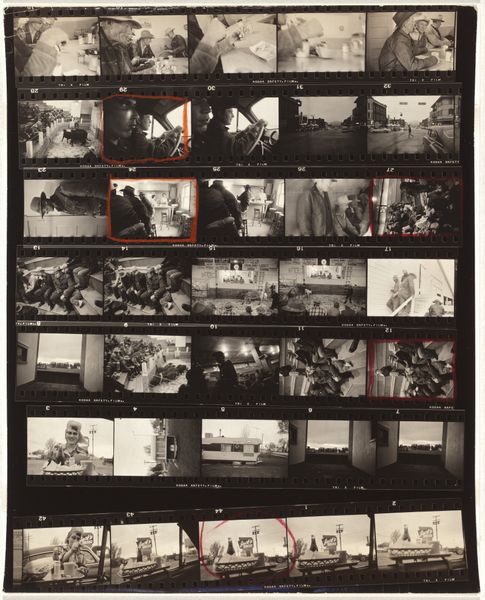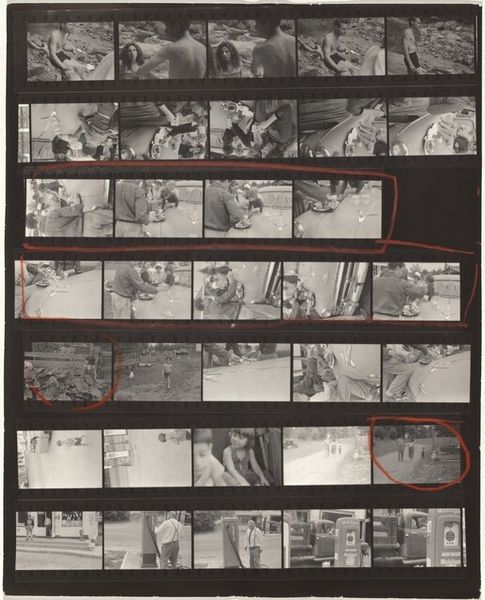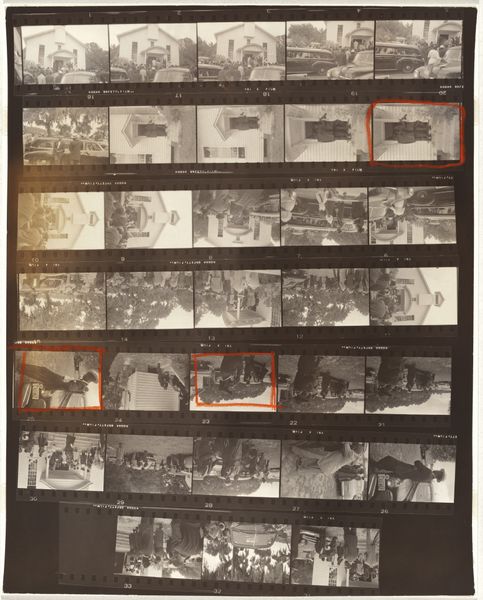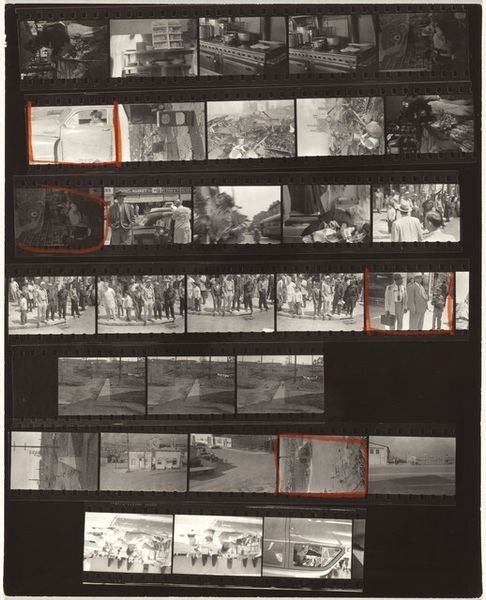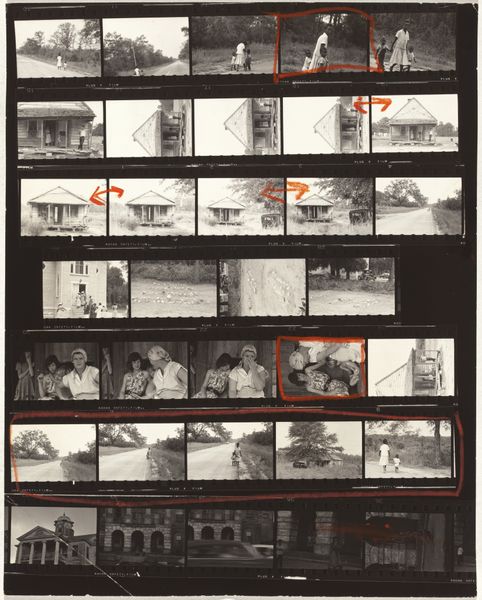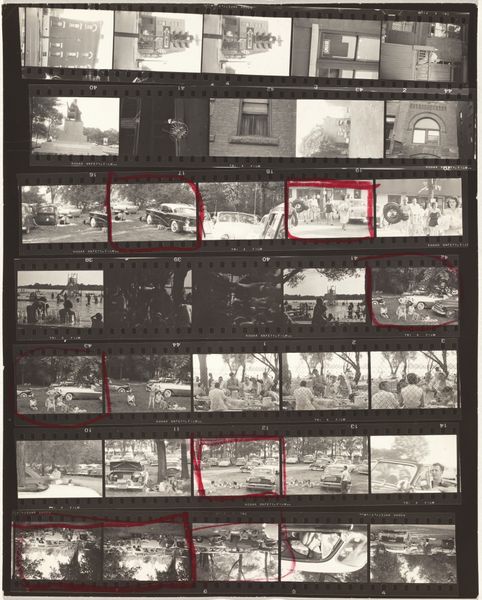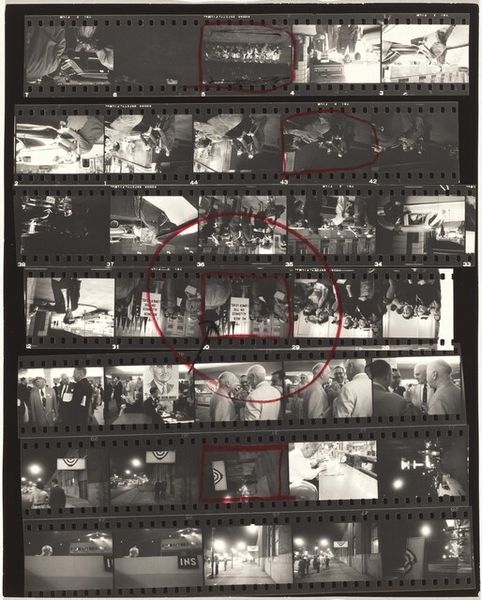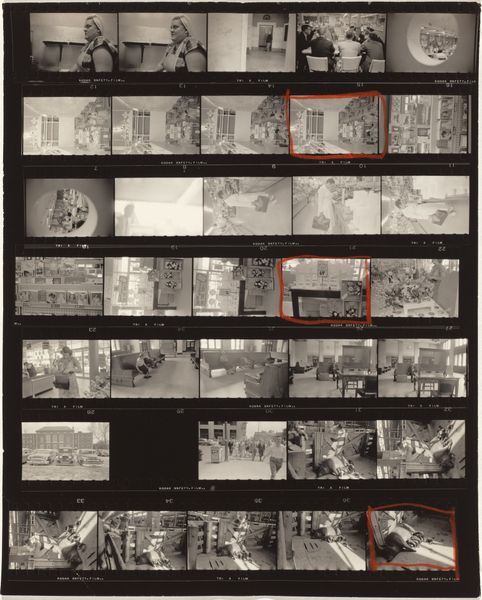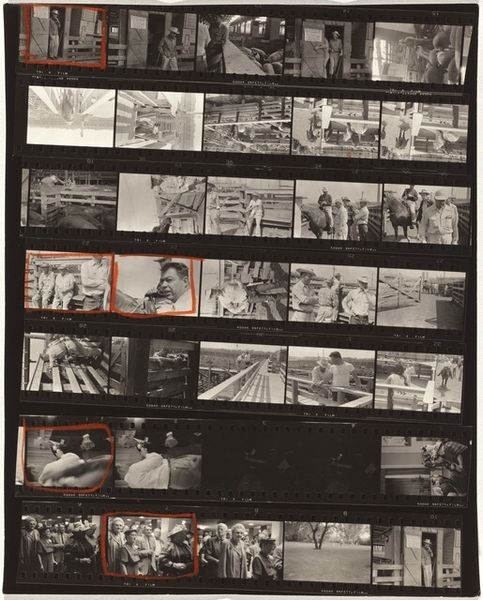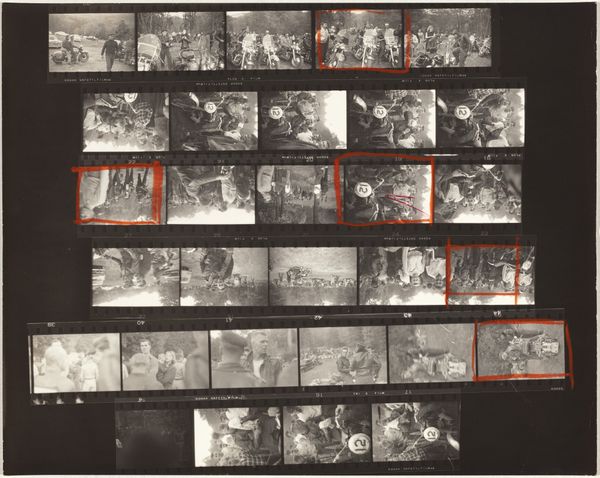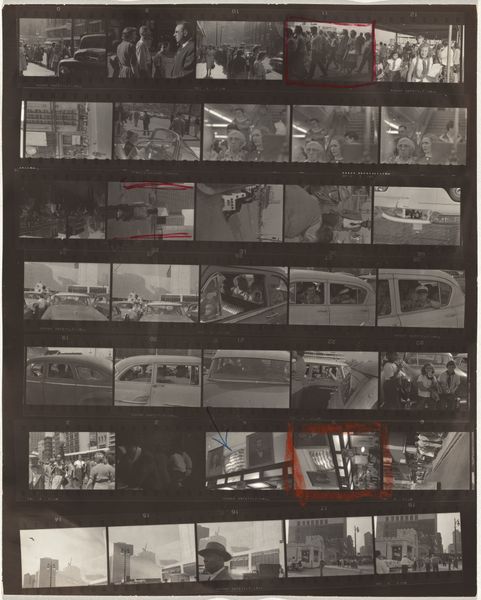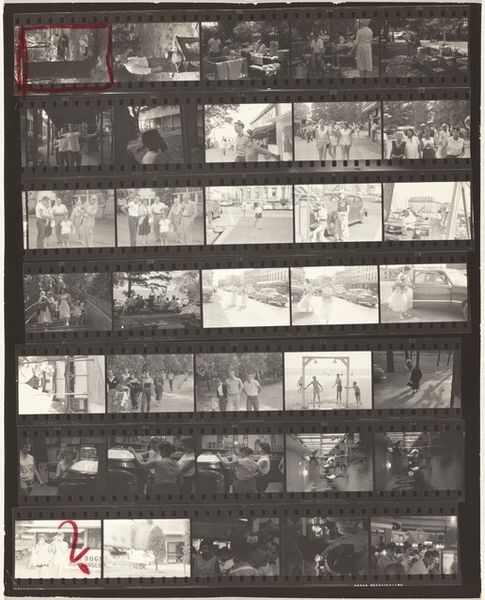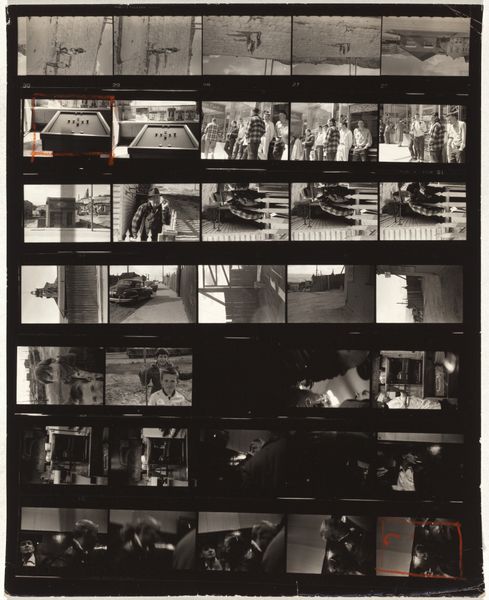
Dimensions: overall: 25.3 x 20.2 cm (9 15/16 x 7 15/16 in.)
Copyright: National Gallery of Art: CC0 1.0
Editor: Here we have Robert Frank's "Guggenheim 18/Americans 75--Elizabethville, North Carolina" from 1955, a gelatin silver print showing contact sheets. I find it interesting how the red markings draw attention to particular moments. What strikes you about it? Curator: This work interests me as a product and document. The medium, gelatin silver print, is integral, but the process matters more than the isolated image. Note the marked contact sheets. We see the artist's labor – the selection, rejection, and manipulation inherent to creating "The Americans." This transforms photography from simple representation to a commentary on artistic choices, labor, and the creation of meaning through these choices. Editor: So, the emphasis is less on the subjects of the photographs themselves and more on Frank’s process of choosing? Curator: Precisely. It exposes the mechanism of creating meaning. Each photograph, a reproducible commodity, is made unique here, and also is contextualized and gains meaning within a sequence, just as individual frames in a film gain meaning from their sequence within a movie, Editor: How does the specific location—Elizabethville, North Carolina—fit into this understanding? Curator: North Carolina, in 1955, represented a specific set of socio-political realities concerning labor, race, and class. Frank is documenting and consuming these realities through his lens, editing and framing his consumption into his final product. The physical materials – the film, the chemicals, the paper, the artist's hand – all contribute to the final piece, bearing traces of labor, choice, and a specific historical context. Editor: It’s like he’s showing the work behind the work, and the act of making a series. Curator: Indeed. By displaying the contact sheet, he challenges traditional boundaries, placing emphasis on the production of images and the role that selection, rather than mere "capture," plays in crafting narratives. Editor: It changes my perception entirely. Now I see the work itself as a material record of decisions, a story of artistic production. Thanks for shedding some light on that.
Comments
No comments
Be the first to comment and join the conversation on the ultimate creative platform.
